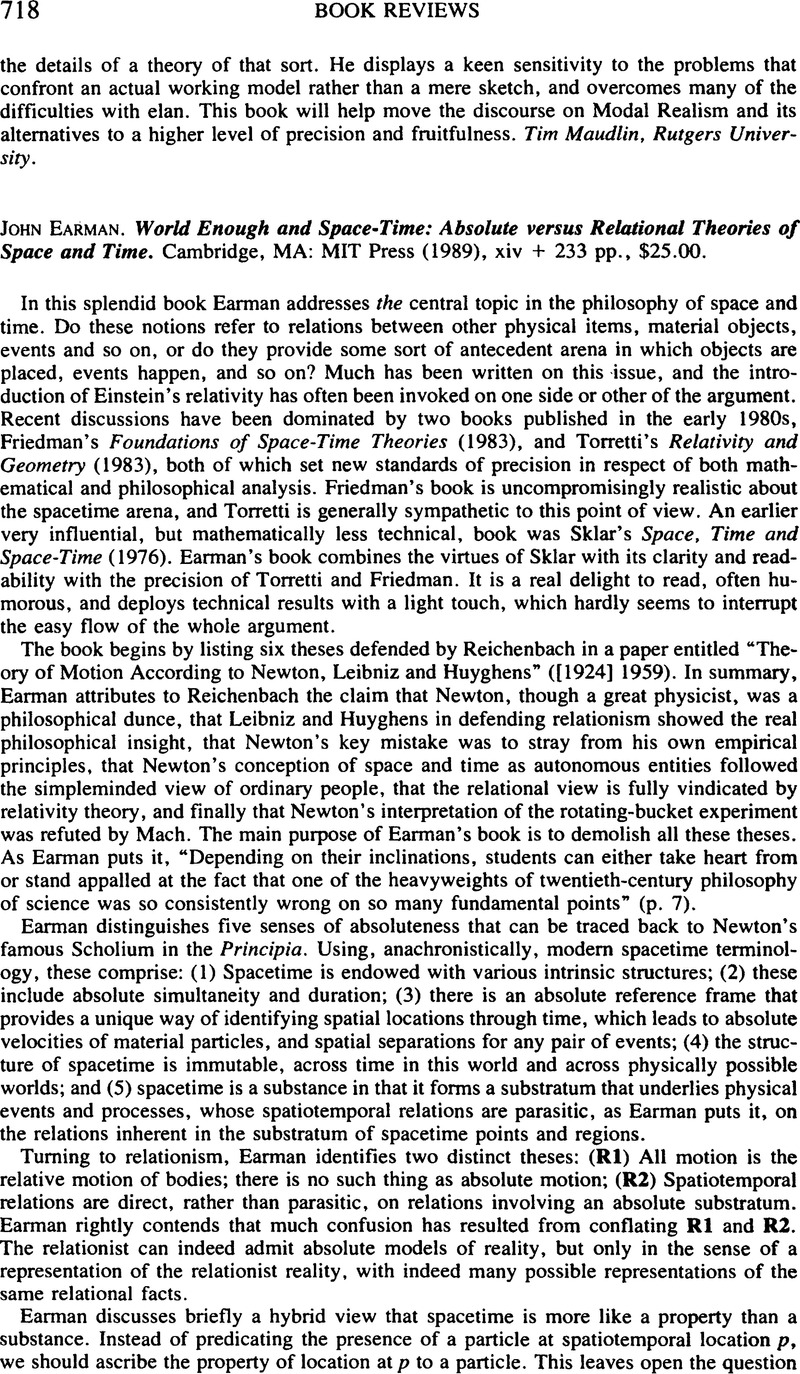No CrossRef data available.
Article contents
John Earman. World Enough and Space-Time: Absolute versus Relational Theories of Space and Time. Cambridge, MA: MIT Press (1989), xiv + 233 pp., $25.00.
Published online by Cambridge University Press: 01 April 2022
Abstract
An abstract is not available for this content so a preview has been provided. Please use the Get access link above for information on how to access this content.

- Type
- Book Reviews
- Information
- Copyright
- Copyright © 1992 by the Philosophy of Science Association
References
Butterfield, J. (1989), “The Hole Story”, The British Journal for the Philosophy of Science 40: 1–28.CrossRefGoogle Scholar
Earman, J. and Norton, J. (1987), “What Price Space-Time Substantivalism? The Hole Story”, The British Journal for the Philosophy of Science 38: 515–525.CrossRefGoogle Scholar
Friedman, M. (1983), Foundations of Space-Time Theories. Princeton: Princeton University Press.Google Scholar
Nerlich, J. (1976), The Shape of Space. Cambridge, England: Cambridge University Press.Google Scholar
Reichenbach, H. ([1924] 1959), “The Theory of Motion According to Newton, Leibniz and Huyghens”. Reprinted in M. Reichenbach (ed. and trans.), Modern Philosophy of Science. London: Routledge & Kegan Paul, pp. 46–66.Google Scholar
Sklar, L. (1976), Space, Time, and Space-Time. Berkeley and Los Angeles: University of California Press.CrossRefGoogle Scholar


